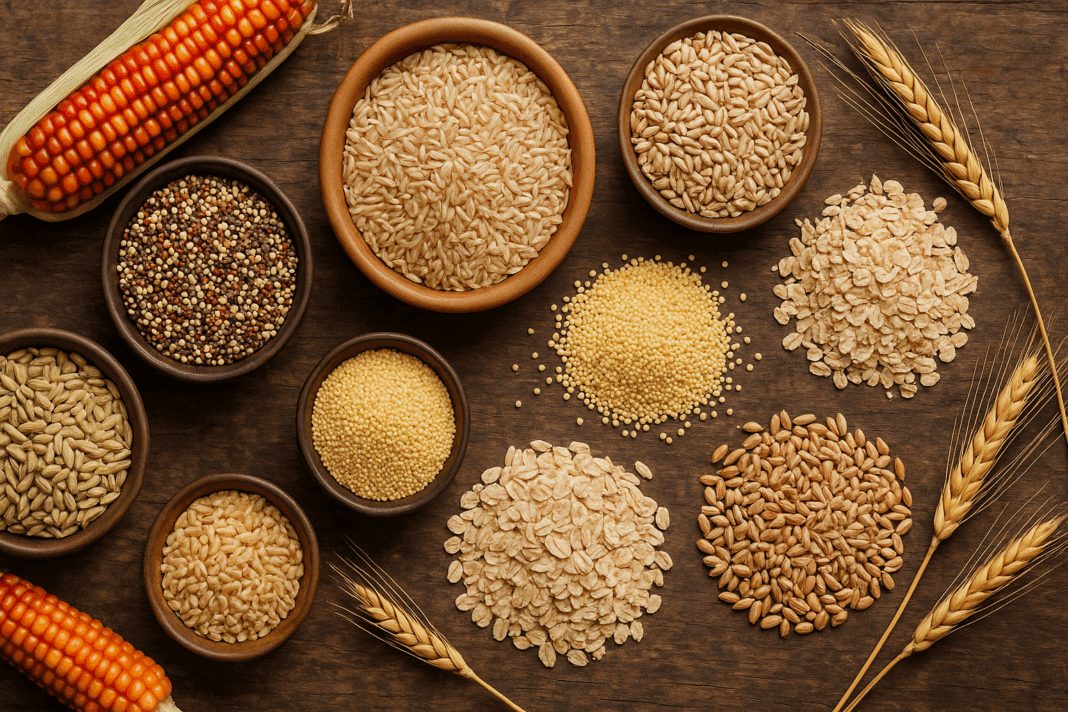Grains are more than just a filler on your plate—they’re foundational to human nutrition and essential to many dietary patterns around the globe. From the toast on your breakfast plate to the rice in your evening stir-fry, grains are deeply woven into the fabric of daily eating. But not all grains are created equal. When we talk about improving our diets for long-term health, a recurring question surfaces: what type of grains should you eat—and why should you consume whole grains instead of their refined counterparts? This article explores the full spectrum of grain choices, delves into their nutritional importance, and offers practical guidance for integrating the best options into your lifestyle.
You may also like: How a Whole Foods Diet Supports Sustainable Weight Loss: Expert Tips for Eating Whole Foods to Lose Weight Safely
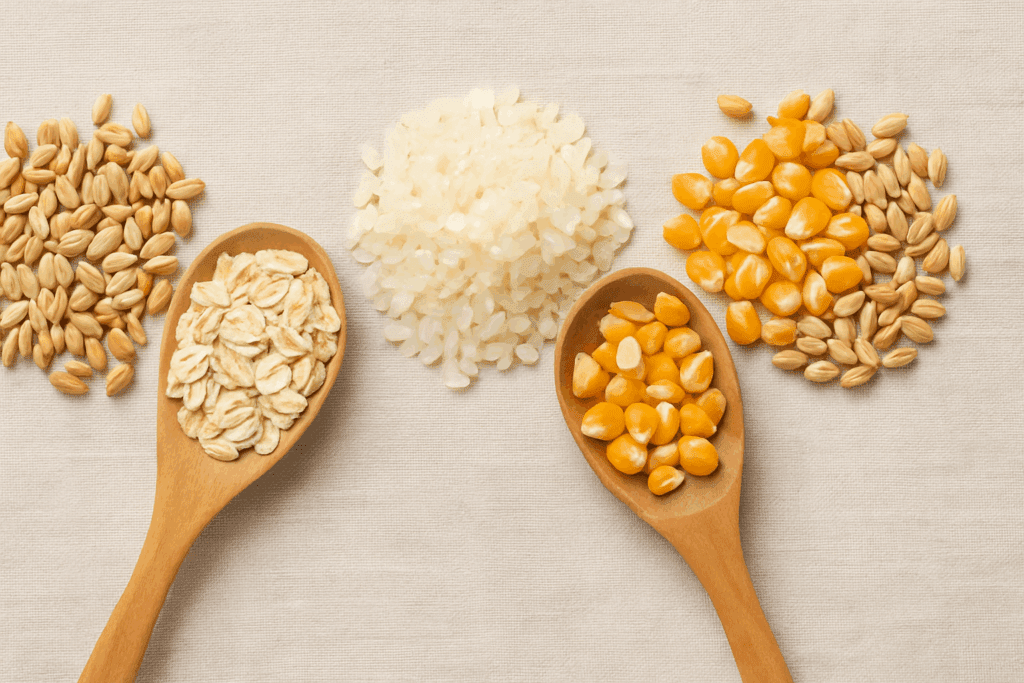
What Are Grains, and Why Are They Important?
Grains are the seeds of cereal grasses, and they’ve been a central part of the human diet for millennia. They come in many varieties, and understanding what foods have grains is as simple as examining your pantry: wheat, rice, corn, oats, and barley are all examples. Grains provide vital macronutrients like complex carbohydrates, as well as micronutrients such as B vitamins and iron. When we ask what are considered grains, the list extends beyond the usual suspects to include millet, sorghum, bulgur, and amaranth.
These foods fall under the larger umbrella of the grains category, and their presence in our diets is crucial. However, not all grains are equally beneficial. Refined grains, like white rice and white flour, have been stripped of their bran and germ during processing. This removes most of the grain’s fiber and many of its vitamins and minerals. That’s why understanding what are processed grains—and why they should be limited—is key for making healthier dietary decisions.
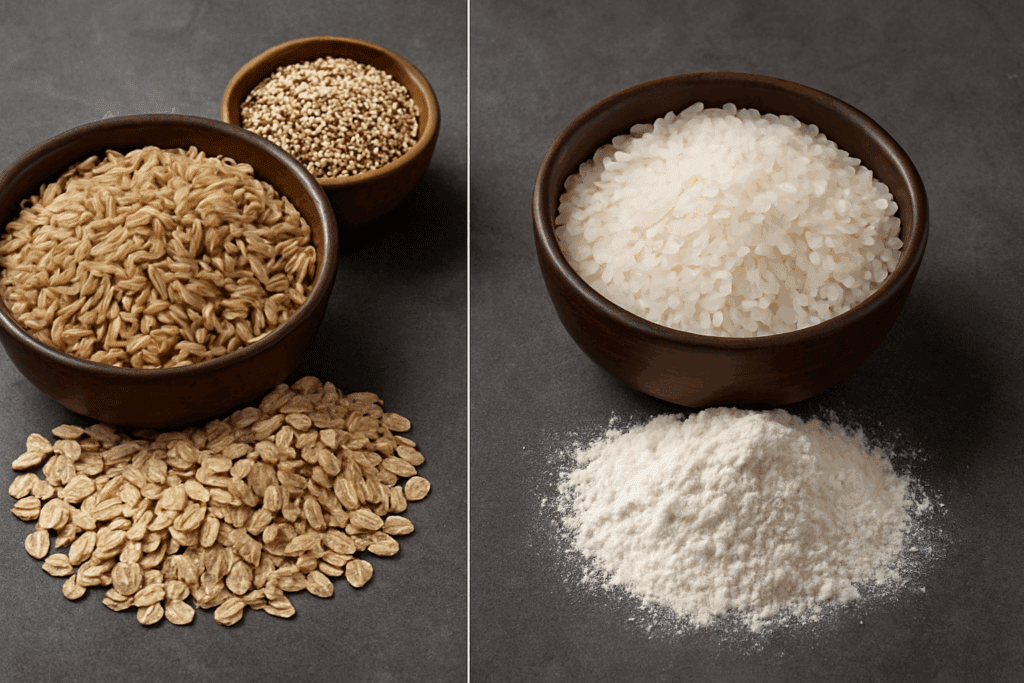
Whole Grains vs. Refined Grains: A Nutritional Comparison
One of the most important distinctions in modern nutrition is between whole grains and refined grains. Whole grains retain all parts of the seed: the bran, germ, and endosperm. This structure means they retain fiber, iron, magnesium, and B vitamins—making them vastly more nutritious. So, what nutrient comes from grain? The answer depends on the type, but fiber, iron, and B vitamins are consistently among the top contributors.
If you’re building a whole grain foods list, you’ll find items like brown rice, quinoa, oats, barley, and 100% whole wheat bread. These grains for meal planning support digestive health, help control blood sugar, and may even reduce the risk of heart disease. In contrast, refined grains have a higher glycemic index and fewer nutrients, which can contribute to weight gain, type 2 diabetes, and cardiovascular problems over time. Understanding what three nutrient values does grains have—including fiber, iron, and complex carbohydrates—can help you make more intentional choices for your meals.
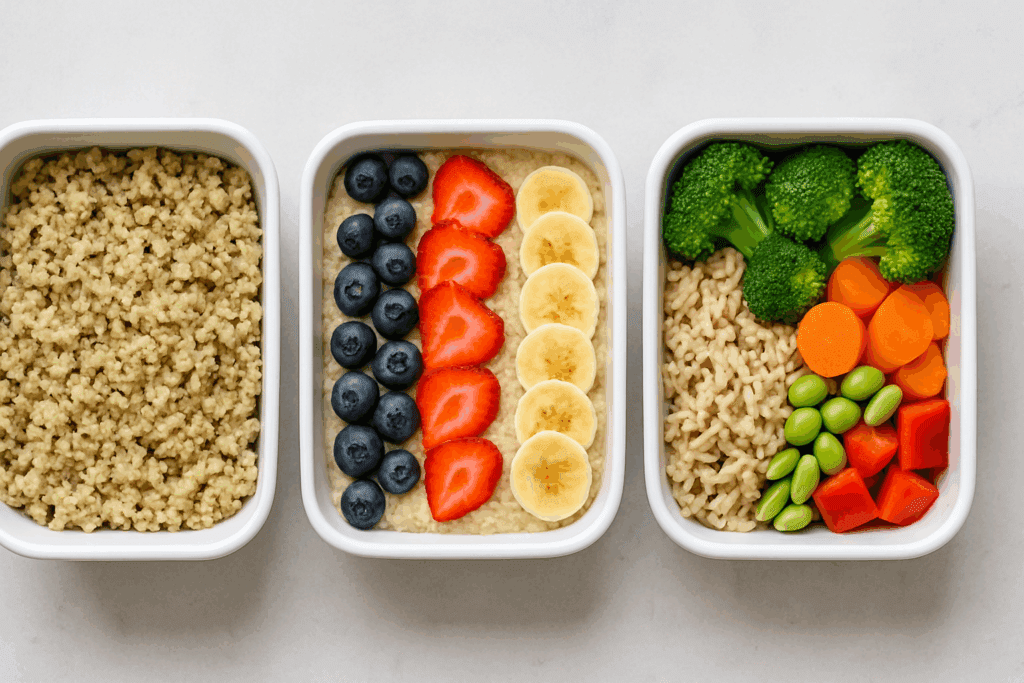
What Type of Grains Should You Eat for Better Health?
When considering what type of grains you should eat, whole grains should take precedence. Whether you’re aiming for heart health, better digestion, or blood sugar regulation, whole grains offer a nutritional advantage. For example, oats are high in beta-glucan, a type of fiber shown to lower cholesterol. Quinoa, a gluten-free pseudo grain, provides all nine essential amino acids—making it a rare plant-based complete protein. Brown rice offers fiber, manganese, and selenium, supporting both metabolism and immune function.
These grains are versatile and can be incorporated into any meal. Choosing grains you can eat for lunch, such as quinoa salads, barley soups, or whole wheat wraps, ensures your midday meal is energizing and sustaining. Looking for simple ideas? Try rotating through three foods grains like oats, farro, and brown rice. These examples of grains food provide varied textures, flavors, and nutritional profiles, which can keep your meals exciting and balanced.
Understanding the Grain and Iron Conversation: What’s More Important, Iron or Wheat?
A common question is: what’s more important, iron or wheat? While this may sound like a competition, it’s actually a false dichotomy. Iron is an essential mineral that supports oxygen transport, energy production, and immune function. Wheat, when consumed in whole form, can be an excellent source of iron as well as fiber and B vitamins. The key is not choosing between iron or wheat but rather choosing whole grains like wheat that naturally contain iron and other beneficial nutrients.
When you consume whole wheat products such as whole grain bread or pasta, you’re not just getting carbohydrates—you’re also benefiting from iron, magnesium, and zinc. A grain that provides three different nutrients, such as whole wheat, contributes substantially to your daily dietary needs. In this way, choosing nutrient-dense grain products can simultaneously address iron intake and overall dietary quality.
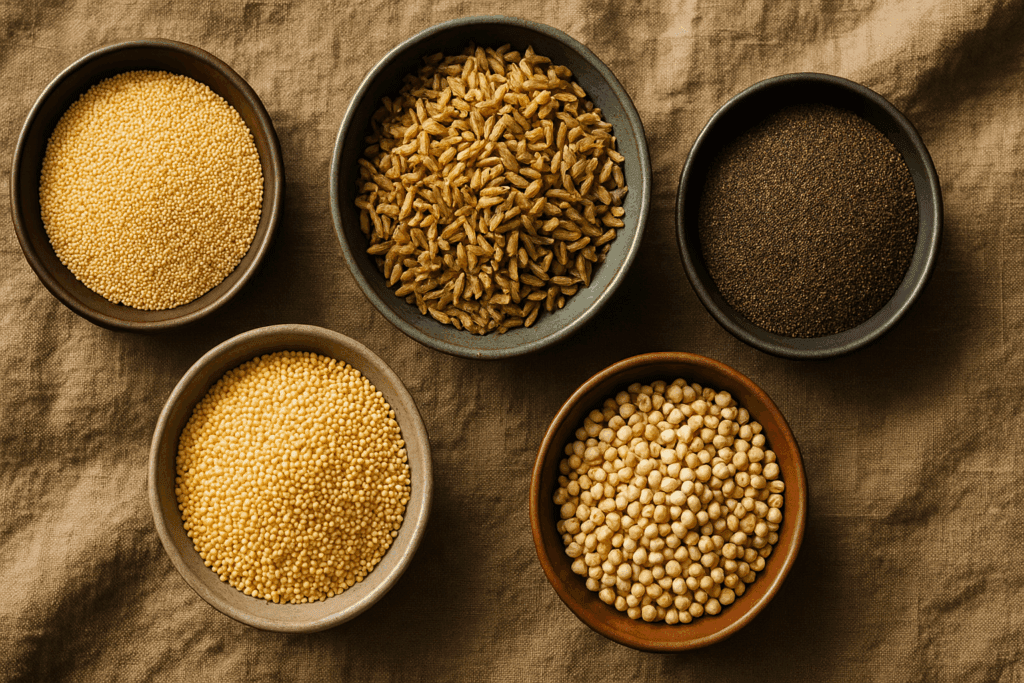
The Value of Grain Diversity: Exploring the Grains List
Many people stick to a narrow range of grains out of habit, but expanding your grains list can significantly enhance your nutrient intake. There are many types of grains in food, each offering unique health benefits. Millet is rich in magnesium and phosphorus, supporting bone and nerve function. Sorghum is high in antioxidants, which protect cells from oxidative stress. Teff, a staple in Ethiopian cuisine, is rich in calcium and resistant starch.
What are some grains you might be missing? Consider adding freekeh, bulgur, or amaranth to your meals. These ancient grains offer depth of flavor, texture, and nutrition. Including different types of grains in food not only diversifies your palate but also ensures you’re getting a wider array of vitamins and minerals. This approach answers not only what are some types of grain foods but also how to elevate your health through culinary variety.
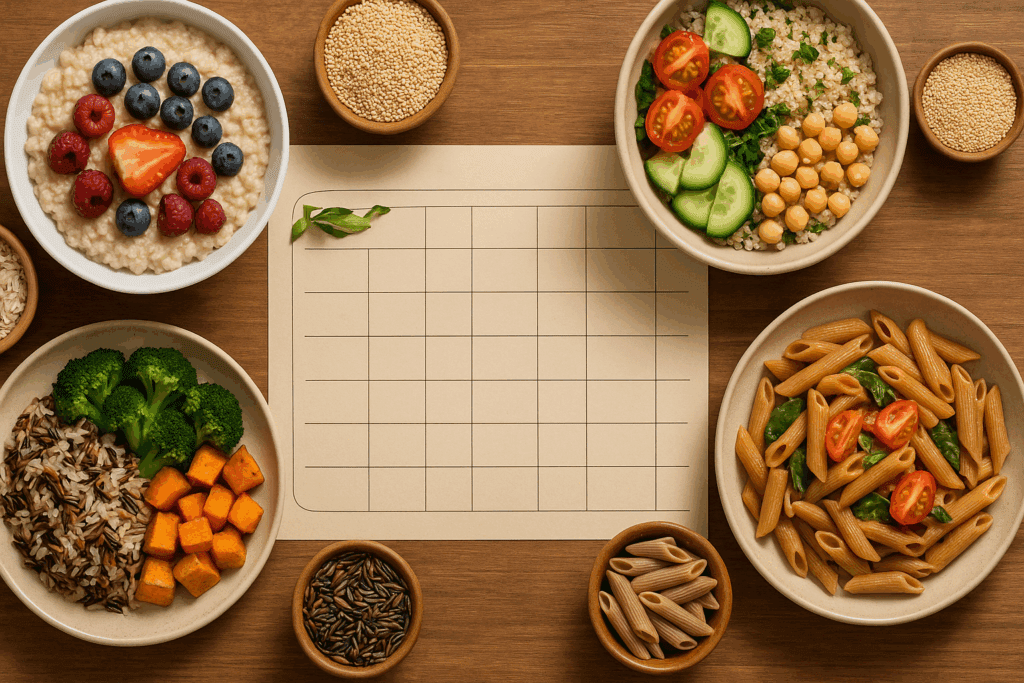
Grains and Meal Planning: Smart Options for Every Day
Grains are a practical and budget-friendly choice for meal planning. Whether you’re looking for grains to eat lunchtime or dinner, whole grains can serve as a satisfying foundation for any dish. Quinoa bowls, wild rice pilafs, and whole grain wraps are all excellent grains for meal prep. A simple guideline is to give 3 examples of foods from grains you can use throughout the week: oatmeal for breakfast, quinoa salad for lunch, and whole wheat pasta for dinner.
Grains can also be a central part of vegetarian, vegan, and flexitarian diets. By combining whole grains with legumes, such as lentils or chickpeas, you can create meals that are rich in plant-based protein, fiber, and micronutrients. These combinations make it easier to meet dietary needs without animal products, making grains essential for diverse dietary patterns.
Grains and Dairy: What to Know About Common Products
Some people need to be cautious about food combinations due to dietary restrictions or sensitivities. That’s why it’s helpful to know what products have grains and dairy in them. Common examples include baked goods like muffins and pancakes, casseroles such as mac and cheese, and frozen meals that combine pasta and cheese. When evaluating a product, always check labels to understand if it falls into the category of foods that contain both grains and dairy.
For those avoiding dairy, there are many plant-based alternatives available that still pair beautifully with whole grains. Nut-based cheeses, plant milks, and dairy-free yogurts can be combined with grains to create balanced and satisfying meals. Whether you’re managing an allergy, a dietary preference, or a chronic condition, knowing how to identify these products is key.
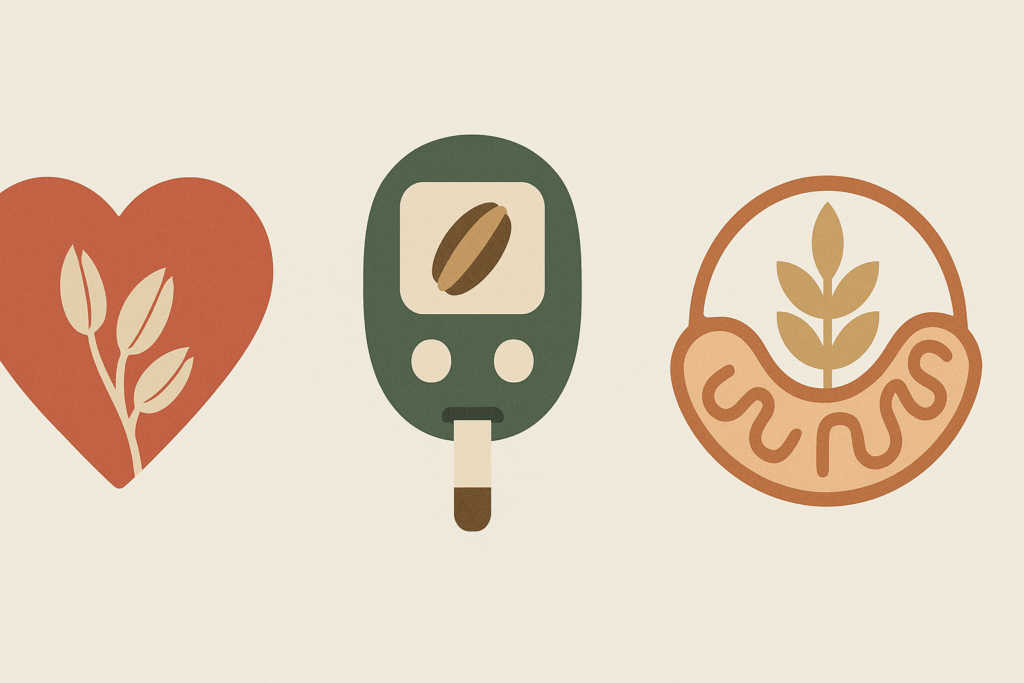
What Are 3 Health Facts for Grains Everyone Should Know?
If you’re looking for a simple way to communicate the value of grains, consider these three facts: First, whole grains support cardiovascular health by lowering cholesterol and blood pressure. Second, they help regulate blood sugar levels due to their high fiber content and slower digestion rate. Third, grains are a vital source of B vitamins, which play a key role in metabolism, nerve health, and energy production.
Understanding what are three nutrient values does grains have helps reinforce why whole grains should be part of a daily diet. These include fiber for digestion, iron for oxygen transport, and magnesium for energy and muscle function. Whether you’re curious about what nutrients come from grain or looking to improve your overall diet, the answer often begins with making smarter grain choices.
Frequently Asked Questions: Smart Grain Choices and Their Role in Nutrition
1. How do cultural traditions influence what type of grains you should consume? Cultural traditions play a significant role in determining what type of grains you should consume, as heritage diets often reflect the optimal use of locally available, nutrient-dense options. For example, in many Asian cultures, brown rice and millet are dietary staples, while Latin American cuisine emphasizes corn-based grains like masa and quinoa. Understanding the cultural context of food choices allows for more sustainable and satisfying nutrition patterns that also respect traditional wisdom. Many traditional diets naturally prioritize whole grains over refined grains, which contributes to long-term health outcomes. When reviewing a grains list within a cultural framework, one can discover new and beneficial grain sources that align with personal values and nutritional goals.
2. What’s more important—iron or wheat—when evaluating dietary priorities? When comparing what’s more important, iron or wheat, it’s essential to understand they serve complementary rather than competitive functions in a balanced diet. Iron is a mineral necessary for red blood cell production, while wheat, particularly whole wheat, serves as a dietary vehicle for delivering that mineral alongside fiber and B vitamins. Instead of choosing one, the goal should be to focus on whole grain sources of wheat that are naturally rich in iron and other nutrients. A whole grain that provides three different nutrients, such as whole wheat, supports oxygen transport, metabolic energy, and digestion all at once. The question should shift from either-or to how best to integrate iron-rich whole grains into your meals for optimal health.
3. How can you optimize your lunch using grains you can eat for lunch? To get the most out of grains you can eat for lunch, consider combining them with proteins, healthy fats, and fibrous vegetables to create balanced, energizing meals. Grains to eat lunchtime like bulgur, wild rice, or whole wheat couscous work well in grain bowls or wraps. These meals are not only practical for busy schedules but also help maintain blood sugar stability throughout the day. Choosing whole grains for meal preparation ensures you’re getting sustained energy and essential nutrients. Using the whole grain foods list as inspiration can lead to creative, satisfying, and nutritionally dense lunchtime choices that outperform processed alternatives.
4. Why should you consume whole grains over trendy low-carb alternatives? While low-carb diets may seem appealing, they often lack the long-term sustainability and breadth of nutrients found in whole grains. One reason why you should consume whole grains is their proven ability to support digestive health, cardiovascular function, and long-term weight management. Whole grains also provide a better balance of macro and micronutrients compared to many grain-free substitutes made from ultra-processed starches. When reviewing types of grains in food, it becomes clear that the fiber, antioxidants, and slow-digesting carbohydrates found in whole grains make them superior. Unlike refined grains, whole grains help you feel full longer without the metabolic downsides.
5. What are some advanced ways to diversify your grains list for better nutrition? Diversifying your grains list goes beyond simply swapping white rice for brown. Consider incorporating sprouted grains, such as sprouted wheat or sprouted barley, which enhance digestibility and nutrient availability. Fermented grains, like those found in sourdough or traditional African porridges, introduce beneficial probiotics and support gut health. Exploring what are some types of grain foods available in global cuisines can inspire meals that are both exciting and nutrient-rich. These techniques not only add variety but also unlock nutritional potential that is often lost in typical preparations of refined grains.
6. How do grains contribute to the synergy between nutrients for grains and dairy in meal planning? When pairing grains and dairy in meal planning, you’re creating meals that offer a diverse spectrum of macro- and micronutrients. Understanding what nutrients for grains and dairy overlap and complement each other is key—for example, pairing calcium-rich dairy with magnesium- and fiber-rich grains can enhance bone and muscle health. Greek yogurt with oats, or cheese with whole grain crackers, are practical examples of this synergy. Knowing what products have grains and dairy in them also helps in optimizing nutrient intake while accommodating dietary restrictions or preferences. This strategic pairing supports digestive regularity, blood sugar balance, and satiety in a way that neither food group achieves alone.
7. Can refined grains ever be a healthy part of the diet? Although whole grains are preferred, refined grains can play a role in specific contexts when chosen and prepared mindfully. Athletes and individuals needing quick energy post-exercise may benefit from the rapid glucose release of certain refined grains. However, it’s essential to balance them with nutrient-dense options and limit overconsumption. When identifying what are processed grains on a food label, look for enrichment with B vitamins and iron, which can help offset some nutritional losses. Nonetheless, refined grains should be the exception rather than the norm in a diet emphasizing whole grain foods and a varied grains list.
8. What are three health facts for grains that many people overlook? Among the most overlooked health facts about grains is their role in supporting mental health through B vitamin content, particularly thiamin and folate. Secondly, grains play a vital role in hormone regulation due to their complex carbohydrates, which influence serotonin and cortisol balance. Third, many grains also support the body’s detoxification pathways through fiber and sulfur-containing compounds, especially in ancient grains like spelt and kamut. When you give 3 examples of foods from grains that provide these benefits—such as oats, buckwheat, and millet—you begin to appreciate their diverse functionality. These examples of grains food reveal that their value extends far beyond basic energy supply.
9. How does food technology influence the future of what are considered grains? Advances in agricultural and food technology are reshaping our understanding of what are considered grains. Biofortified grains like golden rice are engineered to contain higher levels of vitamin A, offering potential public health benefits in malnourished populations. Novel grains such as fonio and kaniwa are emerging in the commercial market due to their adaptability to climate change and high nutritional density. As these innovations expand the list of grains food, consumers have more opportunities to personalize their diets. Understanding what type of grains should you consume in the future may involve considering sustainability, micronutrient density, and resilience to environmental stress.
10. How can families incorporate 3 foods grains into kid-friendly meals without resistance? Introducing children to 3 foods grains—like oats, cornmeal, and brown rice—can be done through familiar and enjoyable formats such as pancakes, muffins, or homemade grain bowls. Blending grains into well-loved dishes helps build positive associations early on. One helpful strategy is to gradually mix whole grains with their refined counterparts (e.g., blending white and brown rice) to ease the transition. Over time, families can explore what foods have grains that offer both taste and texture diversity, encouraging curiosity and healthier choices. This approach not only improves daily nutrition but also sets the foundation for lifelong preferences aligned with whole grain values.
Conclusion: Embrace Whole Grains for a Healthier, More Balanced Life
Grains are more than a dietary staple—they are powerful allies in your journey toward better health. Knowing what type of grains should you eat and understanding the benefits of whole grains over refined grains gives you the knowledge to make better food choices. From reducing disease risk to supporting daily energy needs, grains are versatile, nutrient-dense, and incredibly valuable. When you’re thoughtful about your choices—choosing whole over refined, diversifying your grains list, and incorporating them into balanced meals—you create a foundation for long-term wellness.
Whether you’re wondering why you should consume whole grains or exploring what food has grains, the message is clear: whole grains nourish your body on multiple levels. They provide critical nutrients, help stabilize blood sugar, support heart and digestive health, and bring flavor and variety to your meals. In a world where processed food dominates, choosing whole, minimally processed grains is a small yet powerful act of self-care. Embrace grains not as an afterthought but as a nutritional cornerstone—and watch your health flourish.
Was this article helpful? Don’t let it stop with you. Share it right now with someone who needs to see it—whether it’s a friend, a colleague, or your whole network. And if staying ahead on this topic matters to you, subscribe to this publication for the most up-to-date information. You’ll get the latest insights delivered straight to you—no searching, no missing out.
Further Reading:
Why You Should Include Whole Grains in Your Diet
5 Nutritious Grains Experts Want You to Try
Disclaimer
The information contained in this article is provided for general informational purposes only and is not intended to serve as medical, legal, or professional advice. While NewsHealthWatch strives to present accurate, up-to-date, and reliable content, no warranty or guarantee, expressed or implied, is made regarding the completeness, accuracy, or adequacy of the information provided. Readers are strongly advised to seek the guidance of a qualified healthcare provider or other relevant professionals before acting on any information contained in this article. NewsHealthWatch, its authors, editors, and contributors expressly disclaim any liability for any damages, losses, or consequences arising directly or indirectly from the use, interpretation, or reliance on any information presented herein. The views and opinions expressed in this article are those of the author(s) and do not necessarily reflect the official policies or positions of NewsHealthWatch.

